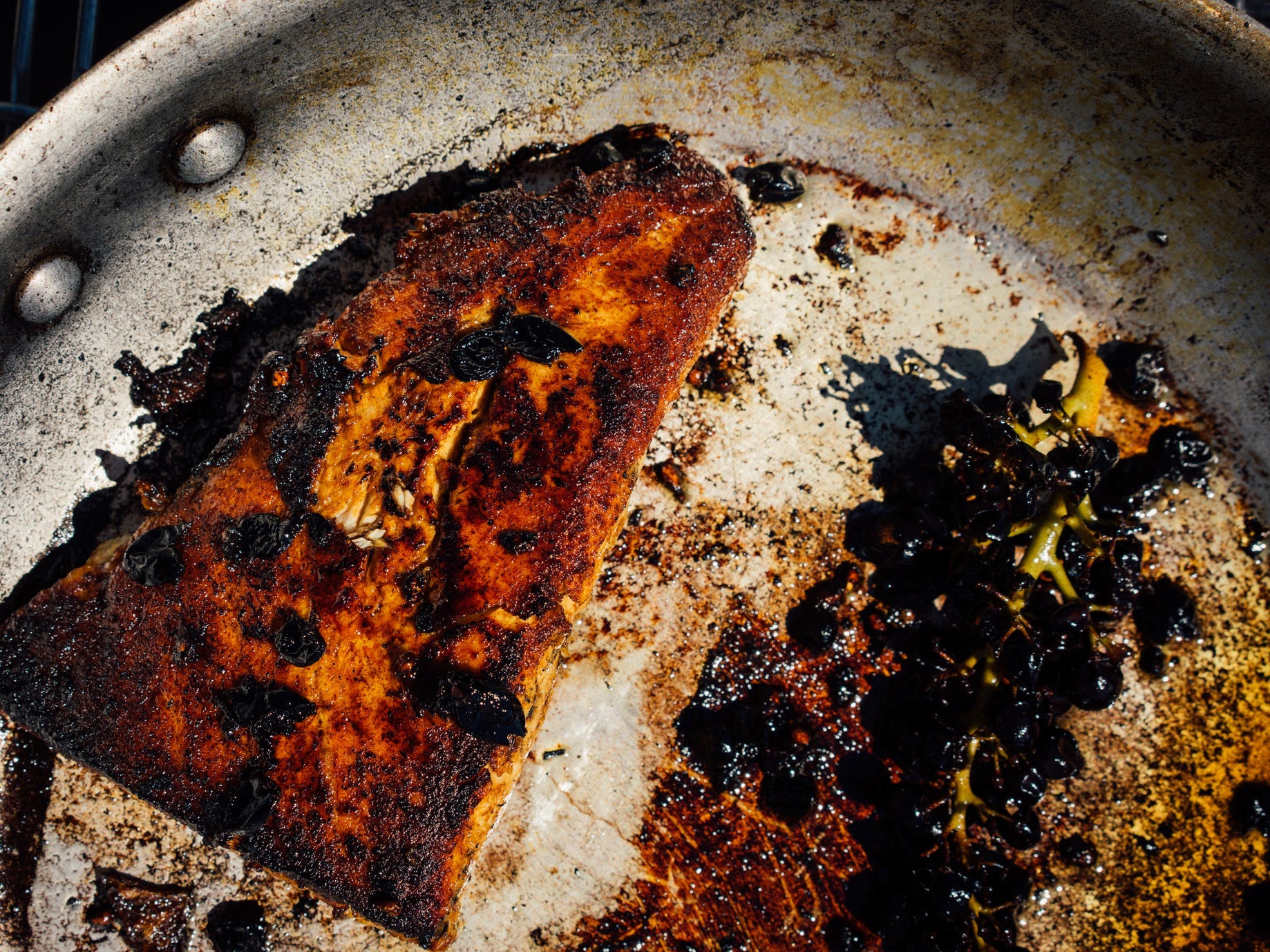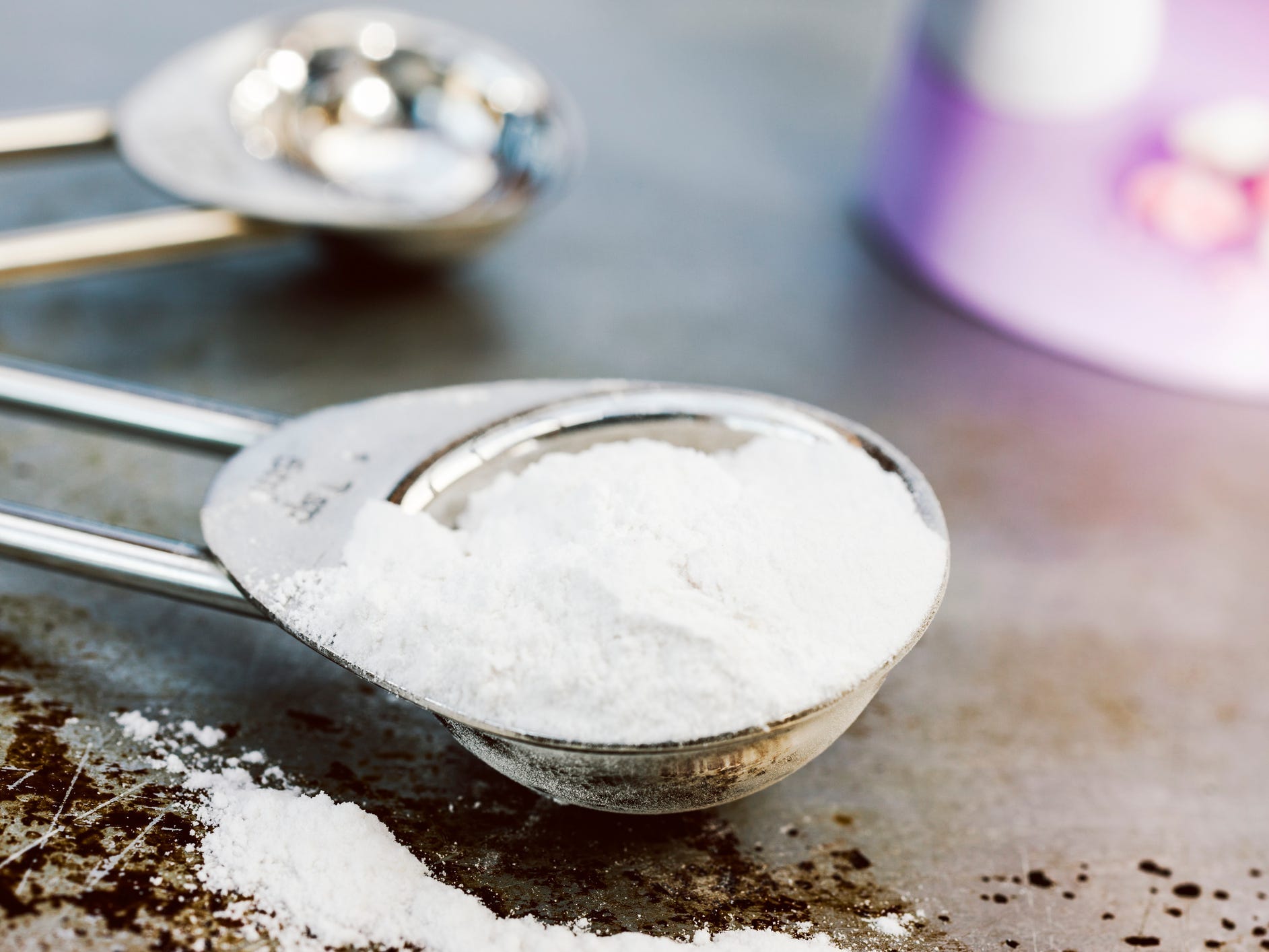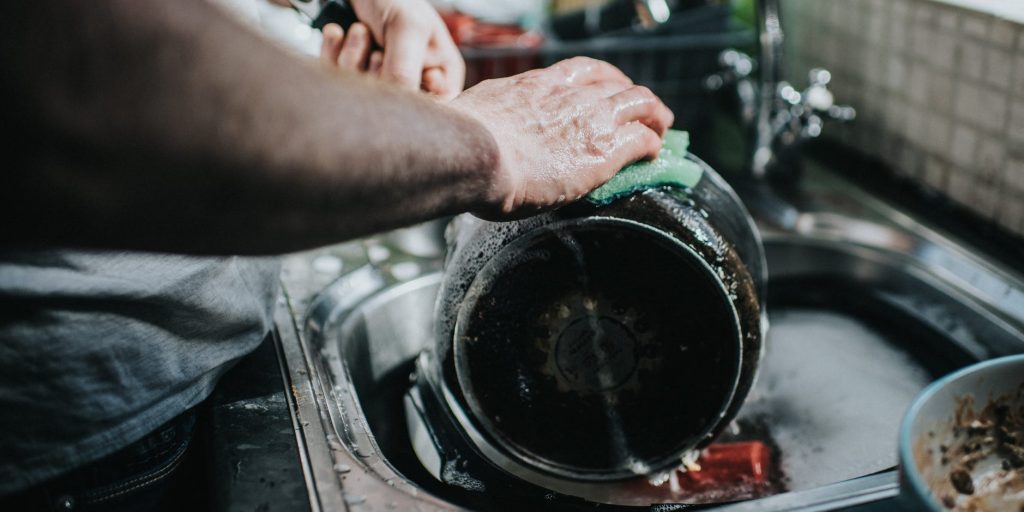
- To clean a scorched pot without heavy scrubbing, use boiling water, white vinegar, or baking soda.
- Keep in mind your type of pot, as some materials react better to different cleaning methods.
- To prevent your pans from burning, keep the food moving and don't overheat it.
- Visit Insider's Home & Kitchen Reference library for more stories.
Nothing kills the buzz of cooking a great meal quite like knowing you have to clean a burnt pot afterwards. Those black, stubborn scald stains don't fade away easily, but a few tried-and-true methods — recommended below by test kitchen manager Neel Kajale of Haven's Kitchen in New York City — can revive a burnt pot to top working condition.
Method 1: Soak the pot overnight
This is the best method for many home cooks, according to Kajale. For stainless steel, aluminum, and enamel pans, drizzle dish soap over the burnt areas on the pot or pan, then fill it with hot water and allow it to soak in the sink overnight.
"You will see that the stubborn grease will release itself, and it will be much easier for you to clean your pot the next morning," says Kajale. After giving the pan time to soak, give it a good wash with a dish brush or scouring sponge in soapy water.
This method should not be used for carbon steel or non-enameled cast iron, as soaking these materials for prolonged periods can cause rusting and warping.
Method 2: Use white vinegar

Acid is a powerful stain-lifting agent, so if the overnight soak still leaves you with lingering burn stains, then Kajale recommends introducing white vinegar into the equation.
Pour a cup of white vinegar and 1 to 2 cups of water into the burnt pot, then bring it to a rolling boil for 5 to 10 minutes, depending on the intensity of the burn stains. You can use a wooden spoon or silicone utensil to scrape the burnt bits off as the water-vinegar mixture boils.
Once the solution is done boiling and the stains are gone, pour out the water and vinegar, allow the pot to cool, then give it a gentle scrub with soap and water to clear out leftover black specks.
This method works for all cookware, but if you use it on non-enameled cast iron (like a cast iron skillet), then you'll want to reseason the skillet afterwards by rubbing the inside with canola or vegetable oil and baking the skillet in the oven at 350 degrees Fahrenheit for one hour.
Method 3: Boil some lemons
For a more fragrant alternative to white vinegar that also has powerful acidic properties, use fresh lemons to clean your burnt pot.
Kajale says to add one large lemon cut into four wedges to the pot, cover it with water, bring the mixture to a boil, then allow the boil to continue for about 5 minutes. Use a wooden spoon to help the burnt food lift away if needed, then clean the pot out with soap and water.
Like the vinegar method, the lemon method works on all cookware.
Method 4: Lift the stains with baking soda

Baking soda is also an effective stain lifter, but it requires a bit of scrubbing.
Sprinkle the burnt spots with a combination of baking soda and kosher salt, using enough of both to fully cover the stains. Then, scrub with a soft sponge and rinse with warm water. The kosher salt will give you enough abrasion to lift the stains, but it will also quickly dissolve in the water, preventing the cookware from scratching. Rinse away any leftover bits with soap and water before letting the pot dry.
Method 5: Dissolve a dishwasher tablet
If you use tablets in your dishwasher, then you'll be able to repurpose them as burn-stain removers.
To do this, remove the tablet from its wrapper and put it in the pot, then fill the pot with water. Put the pot on the stove and bring it to a boil, then lower the heat and simmer for 8 to 10 minutes. As the tablet dissolves, the burnt food should start to lift away.
How to prevent burnt pots
Kajale's recommends keeping a close eye on your food as it cooks to recognize the warning signs for a dish that's about to burn. "When you can see the edges of the pot develop a dark brown color and there is an apparent loss of moisture in the pot," then you're in the burning danger zone, says Kajale.
"You can easily prevent [the burning] by immediately adding a splash of water to bring down the temperature of the pot." If you notice bits of food clinging to the bottom of the pot or pan (which can easily overheat), Kajale suggests deglazing the pan with an acid, like wine or crushed tomatoes."
Insider's takeaway
A burnt pot or pan is a major annoyance, but these methods can clean up the damage and get your cookware back in fighting form again.
Soaking your pots overnight, boiling the stains with white vinegar or lemon, scrubbing with baking soda, or dissolving a dishwasher tablet in the pan will lift the burn marks away without damaging your beloved kitchen equipment.
